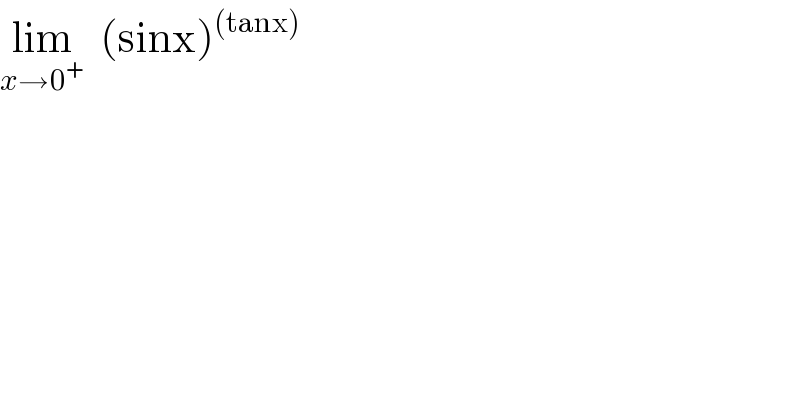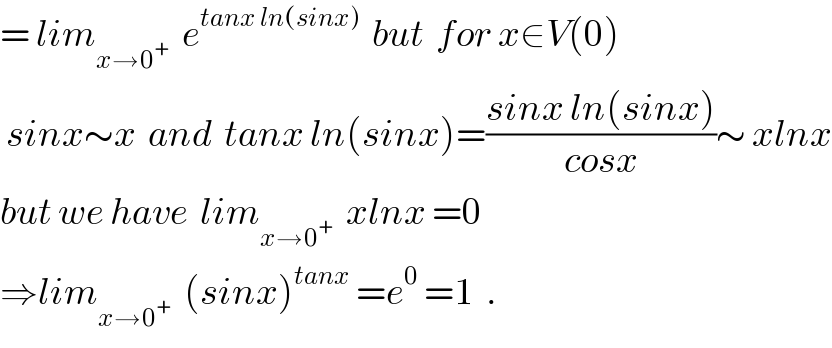
Question and Answers Forum
Question Number 28088 by tawa tawa last updated on 20/Jan/18

Commented by çhëý böý last updated on 20/Jan/18

Commented by abdo imad last updated on 20/Jan/18

Commented by tawa tawa last updated on 20/Jan/18

Commented by tawa tawa last updated on 20/Jan/18

Commented by çhëý böý last updated on 20/Jan/18
![it mean the limit can^′ t at 0 so 0^(+ ) mean u ar approching from right[positive] side](Q28099.png)
Commented by abdo imad last updated on 20/Jan/18

